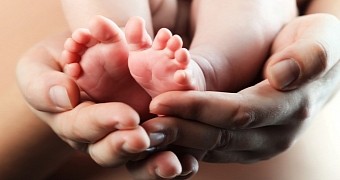As it turns out, it could be that one day in the not-too-distant future, run-of-the-mill skin cells will be used to make babies. That's right, the same cells that cover our body and that we constantly shed all throughout our life might one day become our sons and daughters.
Now don't go dismissing this piece of news as pure mumbo-jumbo just yet. There's some real, hardcore science going on here, and the scientists behind this rather peculiar research project were gracious enough to discuss it thoroughly in a paper in the journal Cell.
Using skin cells to make babies
In the report documenting their work, the Israeli and UK specialists detail how, in a series of experiments, they managed to turn human skin cells into so-called primordial germ cells, which are basically precursors of reproductive cells, i.e. eggs and spermatozoa.
They go on to explain that these primordial germ cells that they obtained in laboratory conditions from an individual's skin cells naturally form during embryonic development. Later on, they grow to become reproductive cells and, well, make it possible for a new generation to be born.
The researchers, led by Azim Surani with the University of Cambridge in the UK and Jacob Hanna with the Weizmann Institute of Science in Rehovot, Israel, managed to turn skin cells into precursors of human gametes by first having them return to an embryonic-like state.
Unlike the other scientists who have until now tried their hand at turning skin cells into reproductive ones, specialists Azim Surani and Jacob Hanna, together with their colleagues, managed to obtain a conversion rate of 25-40%, which is the highest to have until now been documented.
“It is exciting that the Surani and Hanna labs have found a way to generate progenitor germline cells with the highest efficiency ever reported,” Amander Clark, a scientist with the University of California, Los Angeles, said in a statement, as cited by Nature.
There's plenty of work left to do
Admittedly, being able to turn skin cells into precursors of eggs and spermatozoa is and should be hailed as a breakthrough when it comes to treating infertility. The thing is that, as explained by the Israeli and UK researchers, there is plenty of work left to do.
Thus, as shown by previous experiments carried out on laboratory mice, the reprogrammed skin cells can only become actual reproductive cells if transplanted into ovaries and testes. For the time being, the researchers are not ready to toy in this manner with human organs.
First off, they say that further studies are needed to at least try and figure out how such experiments might play out. Besides, it's important to note that the idea of making babies from skin cells is sure to face a whole lot of legal and ethical obstacles.
The scientists hope that, in the years to come, they will at least manage to transplant such precursors of human gametes in the reproductive organs of laboratory mice, maybe even non-human primates. Otherwise put, it will surely be a while until their work actually leads to the development of a treatment for infertility.

 14 DAY TRIAL //
14 DAY TRIAL //